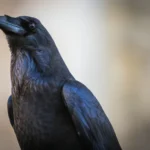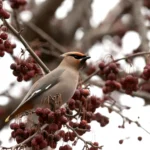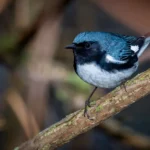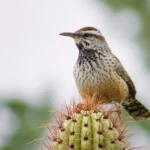The Pileated Woodpecker is one of North America’s largest and most visually striking woodpeckers. Recognizable by its vivid red crest, black plumage, and distinctive white markings, this bird is a fascinating species found in mature forests. Known for its powerful drumming and ability to carve large rectangular holes in trees, the Pileated Woodpecker plays a critical role in maintaining ecological balance. For centuries, bird enthusiasts and conservationists have admired this species as an indicator of forest health.
Table of Contents
Classification and Taxonomy
- Scientific Name: Dryocopus pileatus
- Family: Picidae (Woodpecker family)
- Order: Piciformes
- Related Species: Closely related to the Black Woodpecker (Dryocopus martius), which inhabits parts of Europe and Asia.
- Comparison: Resembles the Ivory-billed Woodpecker, a species that may be extinct in the southeastern United States.
Physical Characteristics
- Size: A large woodpecker, measuring between 16 to 19 inches in length.
- Wingspan: Typically spans 26 to 30 inches.
- Weight: Weighs approximately 8 to 12 ounces (225 to 350 grams).
Also Read :12 Types of Florida Woodpeckers with Pictures
Plumage and Distinguishing Features
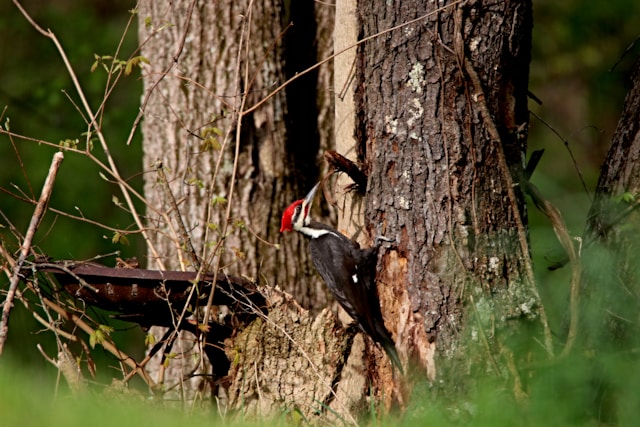
- Predominantly black body with bold white streaks along the face and neck.
- A striking red crest is present in both males and females.
- Sexual Dimorphism:
- Males feature a red malar stripe (cheek marking).
- Females have a black stripe instead.
A telltale sign of their presence is the rectangular holes they create in trees while foraging.

Habitat and Geographic Range
Where They Are Found
Pileated Woodpeckers are widely distributed across North America, favoring forests with mature trees. They are found in various regions, including:
- Eastern U.S.: States like Maine, New York, Pennsylvania, and Georgia.
- Midwestern U.S.: States including Ohio, Michigan, and Wisconsin.
- Southern U.S.: Present in Florida, Kentucky, Tennessee, Louisiana, and Texas.
- Western U.S.: Found in Washington, Oregon, and California.
- Canada: Found from British Columbia to Nova Scotia.
Preferred Habitat
- Primarily reside in mature deciduous forests rich in large trees and deadwood.
- Commonly found in woodlands containing oak, hickory, maple, and pine.
- Occasionally spotted in suburban areas, parks, and golf courses with significant tree coverage.
Also Read : Hawks in Florida: Habitats, Diet, and Appearance of Majestic Raptors
Behavior and Ecology
- Activity Pattern: Diurnal, meaning they are active during daylight hours.
- Territorial Nature:
- Highly territorial, with males aggressively protecting their nesting sites.
- Their territories typically span 200 to 500 acres.
- Drumming Communication:
- Use loud and rhythmic drumming on trees to communicate and mark territory.
Also Read : 14 Different Types of Herons in Florida 2025
Diet and Feeding Habits
What They Eat
- Primarily feeds on insects such as carpenter ants, beetles, termites, and larvae.
- Occasionally consumes fruits, nuts, and berries.
Foraging Techniques
- Uses its sharp, chisel-like beak to break into trees.
- Creates rectangular holes to access hidden insect nests.
Impact on Ecosystem
- Helps control insect populations, preventing tree damage.
- Aids in forest decomposition by breaking down rotting wood, which enriches the soil.
Reproduction and Nesting
- Breeding Season: Typically from March to July.
- Courtship: Pairs engage in mutual drumming and display aerial movements.
- Nest Construction:
- Carves deep nesting cavities in dead trees.
- The entrance hole measures about 3 to 4 inches wide.
- Eggs:
- Lays between 3 to 5 white eggs.
- Incubation lasts about 15 to 18 days.
- Parental Care:
- Both parents take turns incubating the eggs.
- Chicks leave the nest approximately 24 to 30 days after hatching.
Also Read : Discover 10 Types of Hawks in Illinois
Vocalizations and Communication
- Call: Emits a loud, distinctive “kuk-kuk-kuk” sound, resembling laughter.
- Drumming: Produces deep, rhythmic tapping on trees to establish territory and attract mates.
Ecological Importance
Why They Are Important
- Pest Control: By feeding on large numbers of wood-boring insects, they help reduce pest populations.
- Forest Regeneration: Their drilling helps decay old trees, contributing to nutrient recycling.
- Nesting Cavities: Abandoned nest holes provide homes for owls, bats, squirrels, and other birds.
Threats and Conservation Status
Challenges They Face
- Habitat Loss: Deforestation and logging reduce their nesting and foraging areas.
- Declining Nesting Sites: Removal of dead trees limits their ability to find suitable nesting cavities.
- Predators: Eggs and young woodpeckers are vulnerable to hawks, owls, foxes, raccoons, and snakes.
Current Conservation Status
- Classified as Least Concern (LC) by the International Union for Conservation of Nature (IUCN).
- Protected under the Migratory Bird Treaty Act in the United States, which prevents illegal hunting or trade.
Comparison with Other Woodpeckers
| Feature | Pileated Woodpecker | Ivory-billed Woodpecker | Red-headed Woodpecker |
| Size | 16–19 inches | 19–21 inches | 7–9 inches |
| Crest | Bright red | Bright red | Entire head red |
| Bill | Chisel-like | Longer and pale | Short and pointed |
| Wing Pattern | Black with white | Prominent white patches | Black and white |
| Status | Common | Possibly extinct | Stable but declining |
Interaction with Humans
How to Attract Them to Your Yard
- Offer suet feeders, which they enjoy.
- Leave dead trees intact when it is safe to do so, as they provide food and nesting sites.
Cultural Significance
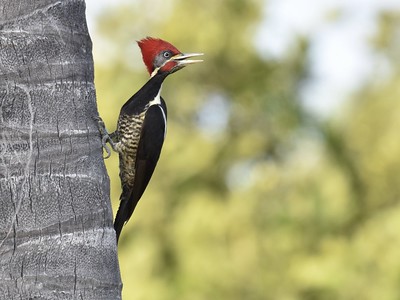
- May have inspired the famous cartoon character Woody Woodpecker.
- Occasionally observed in urban parks and wooded backyards with mature trees.
Fun Facts
- Lifespan: Can live over 12 years in the wild.
- Brain Protection: Their skull has special spongy tissue that cushions the brain from impact when pecking.
- Pecking Speed: Can strike wood at a rapid rate of 15 to 20 pecks per second.
Conclusion
The Pileated Woodpecker is an essential and charismatic species in North American forests. Its striking red crest, loud calls, and remarkable drumming abilities make it a favorite among birdwatchers. As a crucial component of forest ecosystems, these woodpeckers contribute to insect control, tree decomposition, and the creation of nesting sites for other wildlife. Protecting their habitat through conservation efforts ensures that future generations will continue to enjoy and appreciate this remarkable bird.

Welcome to World Birds Life, where the wonder of birds takes center stage. My name is Lexi, and I’m passionate about helping you discover the beauty and joy that birds bring into our lives.



